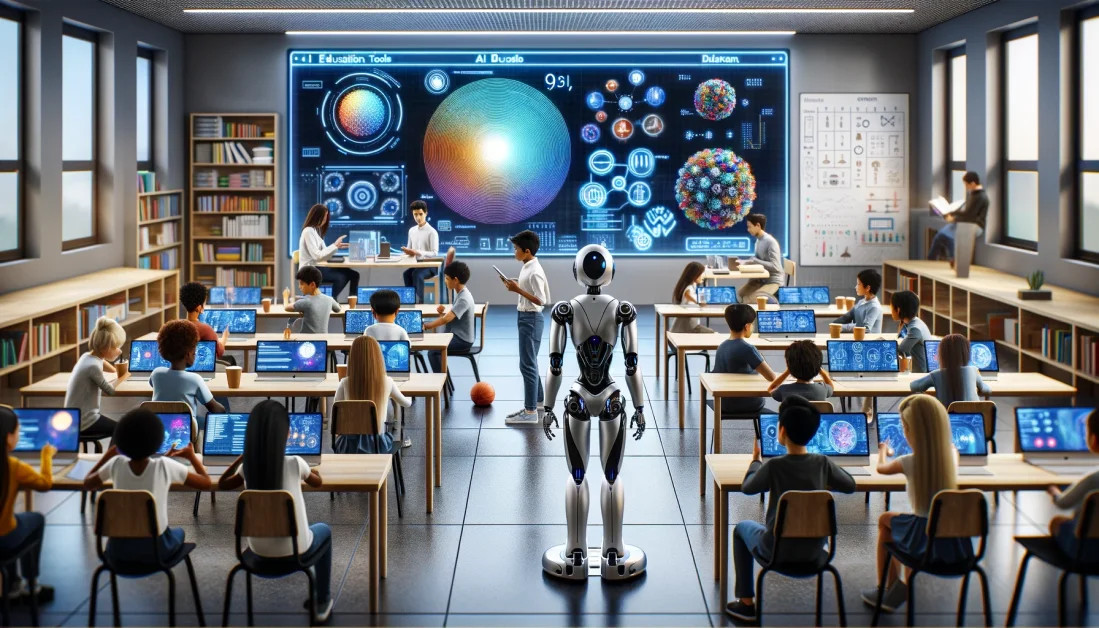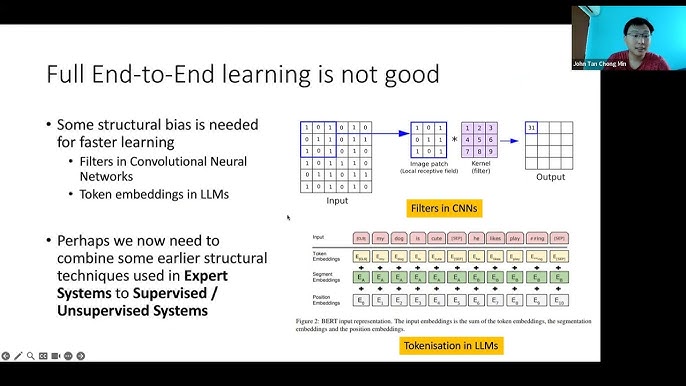Education & Information
Higher education has been increasingly embracing contemporary methods and technologies in an effort to enhance the student experience in general in recent years. Virtual and augmented reality, gamification, learning management systems, and video aided learning are a few instances of how technology has enhanced educational planning and student participation. Let's discuss the use of AI in education. Students could respond to multiple-choice questions and participate in conversations in real time through the classroom response system.
Artificial Intelligence (AI) in Education

AI is a branch of computer science that focuses on creating intelligent machines that can perform tasks that typically require human intelligence, such as problem-solving, decision-making, and language processing. In recent years, AI has made a significant impact in the education sector, revolutionizing the way students learn and teachers teach.
The Role of AI in Education
The use of AI in education is not meant to replace human teachers, but rather to augment their abilities and enhance the learning experience for students. By incorporating AI tools into the classroom, teachers can free up time from administrative tasks and focus on individualized instruction and student engagement. AI tools can also provide valuable insights into student performance, allowing teachers to tailor their lessons accordingly.
Additionally, AI-powered virtual assistants can act as tutors, providing personalized learning experiences for students. These virtual assistants can adapt to individual learning styles and pace, making the learning process more efficient and effective. They can also monitor student progress and provide feedback, helping students stay on track with their learning goals.
Applications of AI in the Classroom
AI has numerous applications in the classroom, ranging from simple language translation tools to complex adaptive learning systems. Some of the most common applications of AI in education include:
- Virtual tutoring: As mentioned earlier, AI-powered virtual tutors can provide personalized learning experiences for students.
- Intelligent content creation: AI tools can analyze large amounts of data and create customized learning materials tailored to students' needs.
- Automated grading: With AI, teachers can save time on grading assignments and exams, allowing them to focus on other aspects of teaching.
- Personalized feedback: AI tools can provide students with immediate and personalized feedback on their work, helping them improve their learning outcomes.
- Adaptive learning systems: AI-powered adaptive learning systems can adjust the difficulty level of learning materials based on students' performance, ensuring that they are constantly challenged but not overwhelmed.
Benefits of Using AI in Education

The integration of AI in education has numerous benefits for both students and teachers. Let's take a closer look at some of these benefits:
Enhanced Learning Experience
One of the primary advantages of using AI in education is that it provides an enhanced learning experience for students. AI tools can personalize the learning process, taking into account individual student needs and preferences. This allows students to learn at their own pace and in a way that suits them best, leading to better learning outcomes.
Improved Teacher Efficiency
AI tools can significantly reduce teachers' workload by automating routine tasks such as grading and lesson planning. This gives teachers more time to focus on individualized instruction and student engagement, ultimately improving the quality of teaching.
Access to Vast Amounts of Information
The democratizing effect of AI in education cannot be overlooked. With AI tools, students have access to vast amounts of information and learning resources, regardless of their socio-economic status or geographic location. This makes education more inclusive and equitable, paving the way for a more educated and knowledgeable society.
Personalized Learning
AI tools can adapt to each student's individual learning style and pace, providing personalized learning experiences. This enables students to learn in a way that works best for them, helping them reach their full potential.
Cost-Effective
While traditional education can be expensive, online learning platforms and MOOCs powered by AI offer affordable alternatives. Students can access high-quality educational resources and courses at a fraction of the cost of traditional education.
Challenges of Implementing AI in Education

While the benefits of using AI in education are numerous, there are also a few challenges that need to be addressed. Some of these challenges include:
Lack of Technical Infrastructure
To fully harness the potential of AI in education, schools and institutions must have the necessary technical infrastructure in place. This includes high-speed internet, computers, and other hardware and software required for AI tools to function effectively. Unfortunately, not all educational institutions have the resources to invest in such infrastructure, hindering the widespread adoption of AI in education.
Privacy Concerns
AI-powered systems store and analyze vast amounts of data, including personal information about students. This raises concerns about data privacy and security, as sensitive information could potentially be accessed by unauthorized parties. Schools and institutions must have strict policies and measures in place to protect student data and ensure their privacy is not compromised.
Skills Gap
The implementation of AI in education requires teachers and instructors to possess a certain level of technological skills. However, many educators may not have the necessary training or knowledge to use these tools effectively. Thus, there is a need for proper training and support to bridge this skills gap.
The Future of AI in Education

The integration of AI in education is still in its early stages, but the potential for growth and advancement is immense. As technology continues to evolve, so will AI tools, providing even more advanced solutions for education. In the future, we can expect to see more personalized learning experiences, intelligent content creation, and seamless integration of AI into traditional classroom settings.
Moreover, the democratizing effect of AI in education will only continue to expand, making education more accessible to individuals from all walks of life. Online learning platforms and MOOCs will continue to provide affordable alternatives to traditional education, allowing anyone with a desire to learn to do so.
Conclusion
In conclusion, the advent of information and AI tools has transformed the education landscape, opening up new possibilities for learning. From virtual tutors to intelligent content creation, AI has numerous applications in the classroom and offers various benefits for students and teachers alike. However, there are also challenges that need to be addressed, such as ensuring data privacy and bridging the skills gap among educators. As technology continues to advance, we can expect to see even more innovative and transformative uses of AI in education, ultimately leading to a more educated and knowledgeable society.
